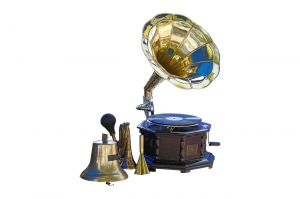 The rules governing the use of expert witness affidavits to oppose, or support, motions for summary judgement in New York, especially in the Appellate Division, Second Department, often are misunderstood. There are cases in which the trial court does not consider an expert’s affidavit because the party that tries to use it did not disclose the expert before the Note of Issue and Certificate of Readiness were filed, which is when fact discovery should be completed. See Constr. by Singletree, Inc. v. Lowe, 55 A.D.3d 861, 866 N.Y.S.2d 702 (2nd Dept. 2008). There are other cases, especially more recent ones, in which the trial court considers an expert’s affidavit despite the fact that the expert was not disclosed before the Note of Issue and Certificate of Readiness were filed. See Rivers v. Birnbaum, 102 A.D.3d 26, 953 N.Y.S.2d 232 (2nd Dept. 2012). There actually is a hard and fast rule as to whether a party will be able to use such an affidavit: It’s firmly within the trial court’s sound discretion.
The rules governing the use of expert witness affidavits to oppose, or support, motions for summary judgement in New York, especially in the Appellate Division, Second Department, often are misunderstood. There are cases in which the trial court does not consider an expert’s affidavit because the party that tries to use it did not disclose the expert before the Note of Issue and Certificate of Readiness were filed, which is when fact discovery should be completed. See Constr. by Singletree, Inc. v. Lowe, 55 A.D.3d 861, 866 N.Y.S.2d 702 (2nd Dept. 2008). There are other cases, especially more recent ones, in which the trial court considers an expert’s affidavit despite the fact that the expert was not disclosed before the Note of Issue and Certificate of Readiness were filed. See Rivers v. Birnbaum, 102 A.D.3d 26, 953 N.Y.S.2d 232 (2nd Dept. 2012). There actually is a hard and fast rule as to whether a party will be able to use such an affidavit: It’s firmly within the trial court’s sound discretion.
As we previously discussed, an expert witness is allowed to provide her opinion at trial when it would help to clarify an issue calling for professional or technical knowledge, possessed by the expert and beyond the experience and understanding of the typical juror. See De Long v. Erie Cnty., 60 N.Y.2d 296, 307, 457 N.E.2d 717, 722 (1983). An expert often also is necessary to oppose, or support, a motion for summary judgement, which is the procedural equivalent of trial. See Rivers v. Birnbaum, supra, 102 A.D.3d 26, 953 N.Y.S.2d 232 (2nd Dept. 2012).
Plaintiffs and defendants both must disclose, prior to trial, the experts they intend to testify on their behalf at trial. The statute that governs expert’s disclosure, however, times the disclosure in terms of a trial, not in terms of a motion for summary judgement. CPLR 3101(d)(1) provides, in relevant part:
d) Trial preparation. 1. Experts. (i) Upon request, each party shall identify each person whom the party expects to call as an expert witness at trial and shall disclose in reasonable detail the subject matter on which each expert is expected to testify, the substance of the facts and opinions on which each expert is expected to testify, the qualifications of each expert witness and a summary of the grounds for each expert’s opinion. However, where a party for good cause shown retains an expert an insufficient period of time before the commencement of trial to give appropriate notice thereof, the party shall not thereupon be precluded from introducing the expert’s testimony at the trial solely on grounds of noncompliance with this paragraph. In that instance, upon motion of any party, made before or at trial, or on its own initiative, the court may make whatever order may be just.
[Emphasis supplied].
The problem comes from the fact that parties often wait until close to trial to disclose to their opponents the experts they intend to call at trial. They do this for many reasons, including the expense involved, since most experts command sizable fees and parties often want to be sure that the case will actually go to trial before they incur the expense of retaining an expert to testify at trial. There also is the very human trait of not doing something until it absolutely has to be done; there truly is nothing more productive than the very last minute.
The confusion comes from how the disclosure requirements of CPLR § 3101(d)(1), apply to motions for summary judgement; in particular, when parties need to disclose their experts, and what penalties they face if they fail to meet the deadline.
In Constr. by Singletree, Inc. v. Lowe, 55 A.D.3d 861, 866 N.Y.S.2d 702, (2nd Dept. 2008), the Appellate Division Second Department scared all the procrastinators straight. It upheld the lower court’s decision to bar the use of experts’ affidavits in opposition to a motion for summary judgement because the party that wanted to use them failed to disclose them before the Note of Issue and Certificate of Readiness were filed. Put another way, the parties agreed that all the preliminaries were completed, that the case was ready for trial, and then one of them said, “But wait, there’s more.” The court, however, did not go along.
If you look at the decision in Constr. by Singletree, Inc. v. Lowe, supra, you can see why the trial court issued such a harsh decision. The case involved a house which one of the defendants, J.C. Construction Management Corp, built for the other defendant, Lowe. The plaintiff, Construction by Singletree, Inc., was a subcontractor on the same job which sued the defendants to recover the money it claimed it was owed for its work. The issue on appeal was Lowe’s cross-claims against JC to recover money for what he said was JC’s breach of warranty and to collect the liquidated damages called for in the contract between them; i.e., Lowe alleged JC improperly installed the flooring and insulation systems and should pay him as a result. The only problem was, Lowe evidently waited too long to offer any substantial evidence to back up his claims, and then he tried to save the day by labeling that evidence as expert’s disclosure.
Continue reading
 New York Business Lawyer Blog
New York Business Lawyer Blog


 When it comes to negotiating the best deal possible most people consider words to be king. If you make an offer there has to be a justification. If you refuse the offer, you immediately have to make a counter-proposal, and justify it. You tout the benefits of your product, justify your asking price, and critique the other side’s position; a few well-placed matter-of-fact observations, should do the trick. What most people do not realize, though, is that sometimes certain things, at certain times, are best left unsaid. Sometimes, silence is golden.
When it comes to negotiating the best deal possible most people consider words to be king. If you make an offer there has to be a justification. If you refuse the offer, you immediately have to make a counter-proposal, and justify it. You tout the benefits of your product, justify your asking price, and critique the other side’s position; a few well-placed matter-of-fact observations, should do the trick. What most people do not realize, though, is that sometimes certain things, at certain times, are best left unsaid. Sometimes, silence is golden. Everyone knows the devastation caused by Hurricane Sandy: property destroyed; power lost; lives disrupted. No one expected it, but everyone has to live with it. Insurance is supposed to help put the pieces back together. But who’s responsible when the insurance you have isn’t the insurance you need? Nothing good happens when businesses close and homeowners can’t rebuild because they don’t have the right kind, or the correct amount, of insurance. When that occurs, who’s liable for such a big mistake? You might think it’s the insurance broker or agent but, more often than not, it’s the insured.
Everyone knows the devastation caused by Hurricane Sandy: property destroyed; power lost; lives disrupted. No one expected it, but everyone has to live with it. Insurance is supposed to help put the pieces back together. But who’s responsible when the insurance you have isn’t the insurance you need? Nothing good happens when businesses close and homeowners can’t rebuild because they don’t have the right kind, or the correct amount, of insurance. When that occurs, who’s liable for such a big mistake? You might think it’s the insurance broker or agent but, more often than not, it’s the insured.  A well thought out business plan should ensure steady, profitable growth by providing goods or services that customers want and can rely upon. One way to achieve this is through brand loyalty, which some would argue is the key to success. If you want to be around in ten years, chances are you will have to convince buyers that your product or service, whatever it might be, is worth having, recommending, and coming back to. Any business owner can tell you the benefits of purchasing what she’s selling; dependable, reliable, high quality, less expensive, value-driven; there are many ways to describe how good her product is. Getting this point across to your potential customers, however, can be difficult. One often overlooked way to convince them of the quality of your product is through a trademark or service mark, which, if done right, will easily identify your product or service. To show you just how important a trademark is, one of this country’s favorite companies, Apple, is back in the news because it is trying to trademark the name of what might become the next must-buy piece of personal electronics.
A well thought out business plan should ensure steady, profitable growth by providing goods or services that customers want and can rely upon. One way to achieve this is through brand loyalty, which some would argue is the key to success. If you want to be around in ten years, chances are you will have to convince buyers that your product or service, whatever it might be, is worth having, recommending, and coming back to. Any business owner can tell you the benefits of purchasing what she’s selling; dependable, reliable, high quality, less expensive, value-driven; there are many ways to describe how good her product is. Getting this point across to your potential customers, however, can be difficult. One often overlooked way to convince them of the quality of your product is through a trademark or service mark, which, if done right, will easily identify your product or service. To show you just how important a trademark is, one of this country’s favorite companies, Apple, is back in the news because it is trying to trademark the name of what might become the next must-buy piece of personal electronics.  We’ve previously talked about how technology can be used in fraud investigations; basically, it can help investigators
We’ve previously talked about how technology can be used in fraud investigations; basically, it can help investigators  As we have talked about,
As we have talked about,  When you are investigating insurance fraud, what is technology really good for? The answer may surprise you: Listening.
When you are investigating insurance fraud, what is technology really good for? The answer may surprise you: Listening.  How to succeed in negotiations is open to debate. It depends in large part on what you mean by success. Business owners, in New York and elsewhere, often think it means they have to win, and their negotiating partner, who they often view as their opponent, has to lose. Hardball, to them, is the key; power is what counts. Most business owners want to gain the upper-hand, and, once they have it, use it for all it’s worth. Lawyers often act in this same way, especially once litigation begins. The take-no-prisoners approach may be tempting, and it certainly does look good in the movies, but it often doesn’t get you what you bargained for.
How to succeed in negotiations is open to debate. It depends in large part on what you mean by success. Business owners, in New York and elsewhere, often think it means they have to win, and their negotiating partner, who they often view as their opponent, has to lose. Hardball, to them, is the key; power is what counts. Most business owners want to gain the upper-hand, and, once they have it, use it for all it’s worth. Lawyers often act in this same way, especially once litigation begins. The take-no-prisoners approach may be tempting, and it certainly does look good in the movies, but it often doesn’t get you what you bargained for. Technology is not the only thing you need to investigate insurance fraud. Technology might tell you who to question, but someone still has to do the questioning. Analysis of big data might give you a lot to talk about, but someone, preferably with a little training and experience, is going to have to have that conversation. Technology might be able to sort through a tremendous amount of otherwise indecipherable data in order to identify, or obtain, clues about possible fraud. No matter how good the technology, no matter how vast the meta-data, no matter how many computers parse the data, a skilled investigator still has to connect the dots, and, eventually, a lawyer still has to convince a jury that those dots create a clear, unmistakable picture of fraud.
Technology is not the only thing you need to investigate insurance fraud. Technology might tell you who to question, but someone still has to do the questioning. Analysis of big data might give you a lot to talk about, but someone, preferably with a little training and experience, is going to have to have that conversation. Technology might be able to sort through a tremendous amount of otherwise indecipherable data in order to identify, or obtain, clues about possible fraud. No matter how good the technology, no matter how vast the meta-data, no matter how many computers parse the data, a skilled investigator still has to connect the dots, and, eventually, a lawyer still has to convince a jury that those dots create a clear, unmistakable picture of fraud.  Negotiations are an important part of everyday existence for all businesses, whether big, medium, or small, whether they are located in New York, around the country, or anywhere in the world. Every time businesses buy and sell goods and services, they negotiate. Business owners want to buy low and sell high. They want to break into a market either by undercutting their competition or by charging a premium for their product to convince buyers of its superior quality. Business negotiations impact the lives of everyday people, too. Everyone knows what a Kindle is, what an iPad is, and what e-books are. Many either have, or know someone who has, at least one of them. In the last few years it’s become common for people to walk around with their nose in their tablet, either reading an e-book or surfing the web. Business negotiations played a big part in making this happen.
Negotiations are an important part of everyday existence for all businesses, whether big, medium, or small, whether they are located in New York, around the country, or anywhere in the world. Every time businesses buy and sell goods and services, they negotiate. Business owners want to buy low and sell high. They want to break into a market either by undercutting their competition or by charging a premium for their product to convince buyers of its superior quality. Business negotiations impact the lives of everyday people, too. Everyone knows what a Kindle is, what an iPad is, and what e-books are. Many either have, or know someone who has, at least one of them. In the last few years it’s become common for people to walk around with their nose in their tablet, either reading an e-book or surfing the web. Business negotiations played a big part in making this happen.